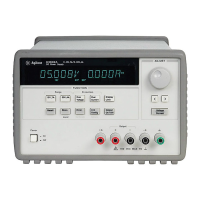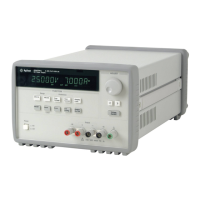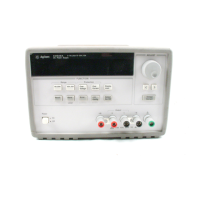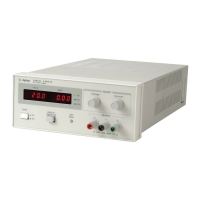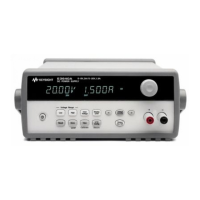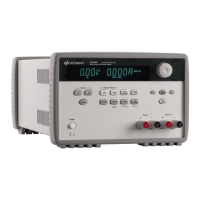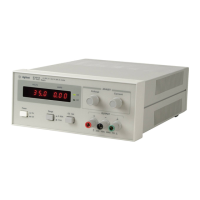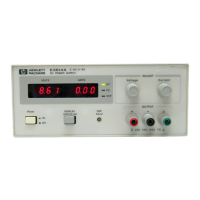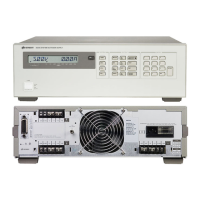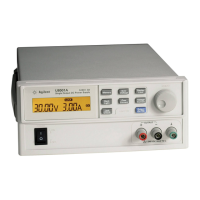Chapter 3 Calibration Procedures
General Calibration/Adjustment Procedure
72
7 Pressing the "Calibrate" key saves the change and selects the second voltage
calibration point for the +6V supply.
If the entered number is within an acceptable range, an "ENTERED" message appears
for one second. The display now shows the second voltage calibration point for the
+6V supply. If the entered number is not correct, an "INVALID DATA" message
appears for one second and the display shows the first voltage calibration point again.
8 Read the DVM and change the second voltage value on the display to match the
measured voltage.
For example, if the DVM reads 5.9990 V, adjust the voltage to 5.9990 V using the
knob and arrow keys.
9 Pressing the "Calibrate" key saves the new calibration constants for the +6V
output voltage and goes to the current calibration mode for the +6V supply.
If the entered number is within an acceptable range, a "CALIBRATING" message
appears for one second to indicate that the calibration is successful and that new
calibration constants of "SETUP 1" are stored. Then, the display shows the above
message to indicate that the power supply is ready for the current calibration for +6V
supply.
If the entered number is not correct, an "INVALID DATA" message appears for one
second and the display shows the second voltage calibration point again. If the
calibration fails, a "CAL FAIL" message appears for one second and the display shows
the "CAL SETUP 1" for the voltage calibration of the +6V supply again.
V HI +5.7000 V
V HI +5.9990 V
CAL SETUP 2
Connect an appropriate shunt (see Table 3-1 on page 44) across the +6V supply's
output terminals, and connect a digital voltmeter across the shunt resistor for the
current calibration.
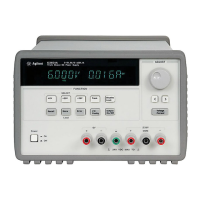
